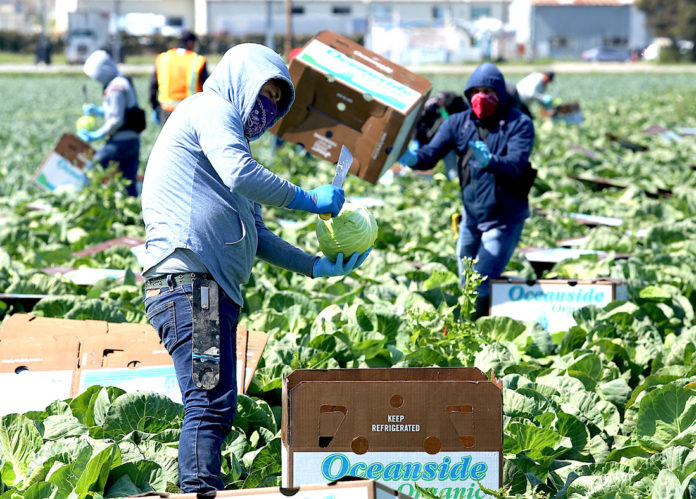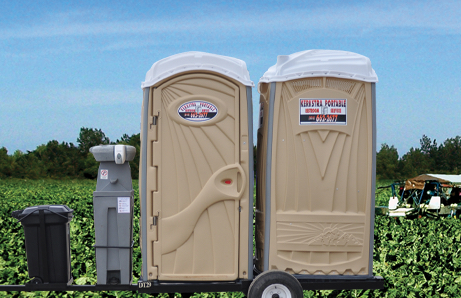
By Amy Wolfe
While the country finds itself navigating unprecedented circumstances during the COVID-19 pandemic, growers across the Southeast have continued forging ahead in producing the safest possible food supply. That work has included a variety of challenges, including how best to prevent the spread of COVID-19 on the farm while considering the safety, health and well-being of the agricultural workforce.
COVID-19 PRECAUTIONS
There are a variety of precautions to evaluate and implement on the farm to ensure the safety of farmworkers during the COVID-19 pandemic. Owners and management need to consider the following:
Communicating with Workers
The need for daily communication with workers is essential. The misinformation available through social media and other outlets has led to critical misunderstandings around how the virus is spread and what steps employers and employees need to take to minimize risk. As such, it is critical that employees receive the following information:
- Provide details on the signs and symptoms of COVID-19 and how to minimize the spread of germs. Videos in English and Spanish are available at https://www.agsafe.org/covid-19-resources/webinars-and-videos.
- Tell workers what to do if they feel sick or have a sick family member at home. Recommendations from the CDC can be found at https://www.agsafe.org/cms/wp-content/uploads/2020/03/CDC-Steps-to-Prevent-the-Spread-of-COVID-19.pdf (English version) and https://www.agsafe.org/cms/wp-content/uploads/2020/03/CDC-Steps-to-Prevent-the-Spread-of-COVID-19_Spanish.pdf (Spanish version).
- Remind workers about steps you are taking to keep them protected and identify who (supervisor, human resources or safety manager, owner, etc.) they should come to if they have questions or concerns.
Social Distancing
During the start of the shift, breaks and lunch, keep workers at least 6 feet apart. Provide additional seating, such as plastic or folding chairs, to ensure workers are off the ground. Stagger breaks and lunch if additional seating is not available. Stagger meetings and trainings at the start and end of the shift if additional seating is not available.
In the field, space workers out to provide distance between them. One row should be separating them when planting, pruning, thinning, harvesting or doing other field work. Make more than one pass through a field when harvesting product with equipment.
Drinking Water for the Crew
Assign an employee to serve drinking water to crew members from the communal water receptacle. Ensure the worker serving the water has proper personal protective equipment (PPE), including disposal gloves and a face mask or covering. Sanitize the spigot after filling disposable cups each break. Sanitize the spigot if it comes in contact with a reusable water container drinking area (example: mouth of a water bottle).

Portable Restrooms and Handwashing
Assign an employee to sanitize portable restrooms (door handles, locks and toilet seats) and handwashing facilities (spigot, soap dispenser, paper towel dispenser) frequently during the day. Ensure the worker has proper PPE. Provide sanitizing products and train workers on how to properly sanitize. Frequently communicate the expectation that sanitation procedures are followed and assign a supervisory employee to monitor compliance.
Worker Transportation
If company vehicles are provided to workers, ensure that those vehicles are being cleaned and sanitized on the inside and outside regularly, ideally once a day. If it is essential to use transportation, such as a van or bus, to transport workers:
- Sanitize at least twice a day (following employee pick-up and drop-off) all points of contact (seats, seat belts, knobs, doors, handles, buttons, etc.) that employees touch.
- Ensure ample ventilation and airflow inside the vehicle.
- If possible, seat workers spaced at least 6 feet apart.Consider additional trips to allow spacing of workers.
- Assign seating so if a worker becomes ill, it is easy to identify those in proximity and take the appropriate next steps around informing them, as well as asking them to stay home from work for 14 days.
Sanitizing Equipment and Tools
More frequent sanitation of all equipment and tools is critical. Ensure teams already responsible for cleaning do so at least daily. Do not forget the following items, which can be overlooked:
- Tractors, forklifts, ATVs and UTVs, including seats, seat belts, knobs, doors, handles and buttons.
- Areas of congregation and meeting, both inside and outside. This includeschairs, shade trailers, buckets, refrigerators, coolers, water jugs, vending machines, garbage cans, bottles and containers used daily
- Employee equipment and tools, including bins and hand tools
GENERAL FARM SAFETY
With the emphasis currently on new COVID-19 protocols, don’t overlook other tried-and-true agricultural safety measures. It is essential that one risk isn’t traded for another. With the summer months fast approaching, growers need to be mindful of the potential for heat-related illnesses. Ensure workers have access to ample drinking water and shade and that they are aware of the steps they should take if they begin to experience overheating symptoms.
In addition, be sure workers using equipment like tractors, forklifts and ATVs receive proper training on safe operation. Training should occur annually and include the process for inspecting the equipment prior to use, the correct operation of the equipment and the protocol for reporting any mechanical issues.
Lastly, it is important that growers remember to be mindful of the Worker Protection Standard (WPS) and the importance of ensuring workers now receive their appropriate annual training. The WPS was updated by the Environmental Protection Agency in 2016 to include annual training for farmworkers not involved in pesticide application. They need to be provided details on routes and types of exposure, signs and symptoms of pesticide poisoning, first aid care, after-work care of contaminated clothing, field postings and the concept of the re-entry interval, where to find the field worker decontamination site, the contents of safety data sheets, and how to stay out of the application exclusion zone.
The continued safety and health of farmworkers is paramount. It is critical that growers maintain vigilance with year-round safety issues, as well as consider the unique circumstances now impacting the industry as it navigates through the COVID-19 pandemic.
Amy Wolfe is president and chief executive officer of AgSafe, headquartered in Modesto, California. AgSafe is a 501c3 nonprofit providing training, education, outreach and tools in the areas of safety, labor relations, food safety and human resources for the food and farming industries. For more information, visit www.agsafe.org, call 209-526-4400 or email safeinfo@agsafe.org.









